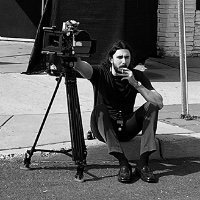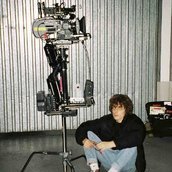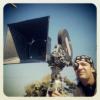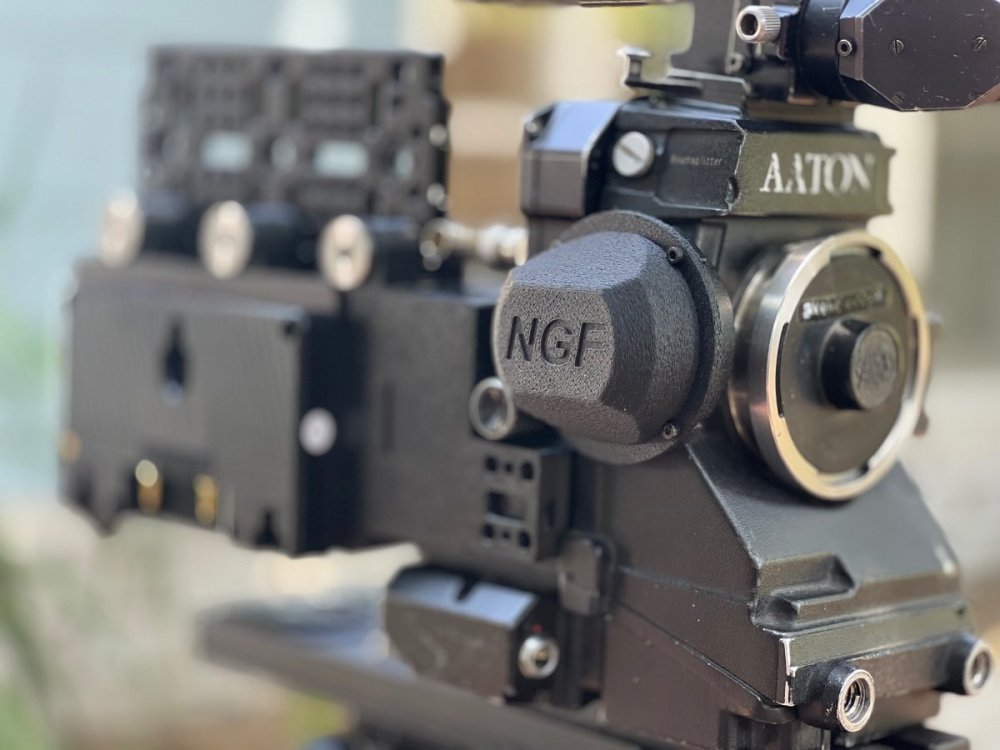-
Posts
7,833 -
Joined
-
Last visited
About Tyler Purcell

- Birthday 07/28/1978
Profile Information
-
Occupation
Other
-
Location
Los Angeles
-
My Gear
Aaton XTR Prod, Beaulieu 2016, Beaulieu 6008, Elmo 1012S
-
Specialties
Aaton Camera Specialist (West Coast United States) and Film Scanning/Restoration. Visit us www.narrowgaugefilms.com
Contact Methods
-
Website URL
http://www.narrowgaugefilms.com
Recent Profile Visitors
105,780 profile views
-
I think they've been around for a long time, for sure isn't a new company. Yea, they're 100% in business, I have clients who use them all the time for film scanning.
-

Dye Fade Tool in Diamant Restoration Suite
Tyler Purcell replied to Todd Ruel's topic in Post Production
So what do you feel the archive clients want? Is it just a clean scan with minimum cleanup? -

Dye Fade Tool in Diamant Restoration Suite
Tyler Purcell replied to Todd Ruel's topic in Post Production
Well, DRS Nova does just this and it works great. Creating entire new frames where there was none using AI. Yes, I probably shouldn't have sent that clip. I was referring to static scratches rather than moving ones in my commentary, but sent a clip not displaying the results of that. Honestly, I didn't even watch the clip, it was one we made for the client and I had recalled it having a fixed scratch over his face and on a zoom shot. I'm not sure why the sample doesn't have that big green fixed scratch, it must have been the next shot. It was a while ago, so I don't have the raw material anymore, oh well. If we get the job, I will start a thread and show you the issues we've been having and why PF Clean worked better than Phoenix. We only had the PF Clean license for 7 days and we pushed a dozen projects through it, but I don't have copies of them. -

Dye Fade Tool in Diamant Restoration Suite
Tyler Purcell replied to Todd Ruel's topic in Post Production
Here is a sample of something that broke every tool we tried, but PFClean just powered through it. Not only did PF run perfectly on our Apple Silicon systems, meaning it was fast to render, but also it was rock solid performance wise. No crashing, no problems. We were importing raw DPX 16mm 4k material into the system via our NVME raid and it was just a flawless experience. We only tested the software for a few days so we could prove it would work to the client. Not only was I blown away, but so was the client. Hopefully when she finishes raising the money, we can get the film finished. Oh and the "original scan" was a non-wet gate scan, to show how good PF Clean was without even a wet gate. https://www.dropbox.com/scl/fi/784cdzx4srnqtcybe1y0w/Tarkofsky-fix.mp4?rlkey=71zu2bxxxyypkigsrnjtq3joy&st=xjr0eqq2&dl=0 -

Dye Fade Tool in Diamant Restoration Suite
Tyler Purcell replied to Todd Ruel's topic in Post Production
Because DryClean is one of the only fully automated tools in the system. PFClean can 100% automated remove scratches, no need to circle them, no need to go frame by frame, it's literally a check box. Phoenix's scratch removal tool is shit, it basically a clone tool, it does not create new material. Also, as you pointed out, it requires a substantial amount of tracking and manual work. PFClean does not, it's completely automated. It automatically detects scratches because they don't match the background for the most part. With one button, you can activate scratch removal and it will create all new material to fill the gaps. Where in our testing it worked flawlessly, I can see how it MAY get confused and potentially create the wrong information. Our wet gate conceals around 70% of scratches anyway, so in testing we've found PFClean to have no issues fixing the remainder. I will probably get another months license and do a demo, we only used it for one project and were blown away. DRS Nova is the only thing close and for around $500/month with a license that can be turned on and off at a whim, it's a great tool. We still use Phoenix for daily work, along with Resolve for color and some light dirt/dust removal. But for seriously damaged film, PFClean and DRS leave the competition behind in my opinion. I really wish the guys at Digital Vision would add some of those tools to Phoenix. -
Yea, it's not sadly. There really truly were only a few hundred Arri-only feature films prior to the 1980's shot globally. It's a very small number. There is actually a book I have somewhere in my storage about it, they listed every film on a few pages, it was a VERY short list and many of them were more recently made, as the book came out in the 90's. 35BL was a big deal of course, but it was also trust with the system, people started to trust it more and more, which led to more and more use. So I will give ya the 1980's as potentially a time period where they started their dominance. I still think it's only 40 years or so if you actually look at titles globally. Obviously with TV, commercial, music video and 16mm, there is no contest, Arri has dominated those fields for a long time.
-
I think what Simon was saying is that Arri didn't dominate for 100 years. In fact, their 35mm feature film camera business didn't really take off globally until the end of the 80's and into the 90's. It also only ran through 2012 or so before they came out with digital cameras and shifted away from film. I think you may underestimate the local rental houses and what they rented vs what other people rented. Plus many DP's preferred certain systems and if you weren't working with someone shooting with one of those systems, then how would you know? Historically tho, prior to the 535, 453 and Arricam's release, there were actually very few 35mm movies shot entirely with Arri cameras. I think you'd find it to be in the hundreds globally. The acquisition of Moviecam and the money they put into making the 535, 435 and Arricam systems, were really what got them the dominance. Arri was not doing well financially during the late 90's and they needed to develop a new camera fast, they spent a lot of time revamping Bauers next generation moviecam and turned it into the Arricam. The industry was enamored with the Arricam, Arri scan and Arri laser. The tech worked, it was a DI workflow that everyone wanted and it was BY FAR the most successful end to end system in the world. Those three tools were in every country globally from India and Australia to New Zealand and all over Europe and the United States. Like a web, they basically fully-dominated for what, a decade before film died? Then like a flash, they dumped film and were ready to become the new leaders in digital cinematography. However, their dominance in the professional industry kept going. I do agree, the post 2000 dominance of Arri is legitimate, but it's absolutely not a reflection of the years prior with 35mm filmmaking. When you look back, the most dominant system(s) were made my Mitchell. The BNC, BNCR, Technicolor, the 65mm systems, these are all Mitchell designs. Then when Panavision took over, their dominance soared. From 1930 through 1980 (50 years), the industry still relied heavily on Mitchel systems in the form of Panavision. Yes it's true, many films that shot with Panavision cameras did have a 2C handy for those MOS shots, so it's not like the camera system wasn't used, it absolutely was. Now, maybe you're thinking 16mm? Arri's 16mm cameras were far more widely used, that's for sure. Even the 16BL and S/M were very well used systems due to TV and such. However, the SR simply dominated the industry, it was a checkmate at the time. Even guys like Aaton couldn't really compete until they got their bugs out and made the XTR Prod/Xtera. By then there were thousands of SR's on the market, so it was a rough business to be in. The 416 is still to this day the most dominant 16mm camera available. So if you're referring to 16mm, I'd say the dominance was a lot longer than it was with 35mm, but nowhere near 100 years.
-
Howdy! We are finally ready to release our 2nd generation HD video assist for Aaton Xtera, XTR Prod/Plus with later generation optics and 35-3 35mm cameras. Our flicker free design, utilizes the latest generation 600 series Sony EXMOR imager with advanced noise canceling and automatic gain control. We have been testing this camera system for nearly a year now and our 2nd generation will be the first available to the public through our new Narrow Gauge Films website (to launch later in July). We are posting this now because two of our recent installs of the 2nd generation tap have gained quite a following on social media and figured it was time to announce our prices and a little video about the quality. https://www.instagram.com/p/DLvqeKSyJle/ It's a flicker free HD tap system that basically slots into the original fittings. There is a bit of soldering work and some slight modifications to an interconnect board, but the camera is not altered otherwise. This means, the system can easily go back to standard def if need be. It also doesn't add boards like other companies, which can cause camera failures down the road. We also use an all-metal design, which means there are no 3D printed parts to fail. It means removing the camera for service is incredibly easy, it works just like the OEM system, which is very much unlike our competitors. Our flicker free tap is the only one like it out in the wild. It has a grain-free auto-gain system, utilizing state of the art noise reduction to clean up the image. This means, when the lens is all the way closed, even in super dark environments, you still get a sharp and bright image. It compensates instantly for iris adjustments as well. Also, because the flicker free system is actually automatically compensating for ANY flicker, it will remove flicker from other high speed modes. This is a little video explaining the tap and it running: https://www.dropbox.com/scl/fi/0wamueeokwbdz3hq3zymu/Video-Tap-close-up-large.MOV?rlkey=xkjf5fyobfi163ctj53a2cx96&st=jl0f2zh1&dl=0 It's $2999 for Xtera, $2499 for 35III and $1799 for XTR Prod/Plus with the later generation side optics. The 35III variant we will be demoing shortly and it more money because it has an all-aluminum housing and is pretty much plug and play. Turn around time is very quick, it takes a week to get the parts, so if you message us to get one installed, we can order the parts the moment you ship your camera and by the time it's arrived, the parts will have as well and we can install right away. The 35III variant can be made ahead of time however, so it may actually be a quicker installation. We won't be doing any other Aaton camera system but those 3 sadly. We have tried to fit our components into other cameras, but because the boards are an unusual size and thickness, they just don't work anywhere else but those cameras. We will be doing Moviecam's, Arricam's, 416's and SR3's shortly. We have the optical path and such ready, but we need someone to give us a camera for a while to develop it properly. Contact us at info@narrowgaugefilms.com or visit us online at www.narrowgaugefilms.com for more information launching mid/end July 2025.
- 1 reply
-
- 1
-

-
You really deserve it bro, what a career! So happy for you, exciting times ahead!
-

testing 16mm stocks with 35mm stills
Tyler Purcell replied to adrian angehrn's topic in Film Stocks & Processing
Sadly there really isn't any way to do what you're trying to do using the methods listed above. 1) Cinestill is old film, it will have a layer of fog that will not be present on the new Kodak Vision 3 16mm film you'll use for your shoot. Thus, making it entirely inaccurate in terms of grain. 2) Kodak has removed the Remjet anti halation coating and most likely anything you shoot with Kodak film in the future, will be this new stock. Cinestill does not have this new material. It will react entirely different being pushed/pulled as the new AHU layer is actually made of black silver, which needs to be removed during the processing process. Remjet is actually removed prior to processing. Because the black silver is processed out, whatever remains will have a very different look than simply removing a layer physically. 3) 35mm stills are vistavision size 8 perforations. Stills lenses are designed to cover that frame size, they are not designed to give you any indication of sharpness in a center crop. I have seen this with my digital cinema cameras as well. When using actual super 16 glass, you will have an entirely different look, it will be way sharper. Also, the contrast of the lenses is very important as well, you can't just use still lenses and then expect the Superspeeds to look the same, because they won't. Yes, Zeiss does make stills lenses, but they don't have the same look as the Superspeeds. Sadly you need to perform controlled tests on 16mm to really get the look and feel of what you're after. I would also confirm with Kodak which film you'll be getting, the older remjet film or the new AHU coating film. You will need to test with whatever film you're shooting with. The AHU film has not replaced the Remjet film yet, but it's coming fast. -

Best modern lenses for Super 16mm
Tyler Purcell replied to Mohammed Tahir's topic in Lenses & Lens Accessories
I only used the 16mm set of Ultra Primes, I haven't used the 35mm set. The main reason is simply wider angle shots. It's nice to have a fast S16mm designed 8mm lens for instance. -
You aren't going to have less grain by over exposing because it increases the contrast. The grain structure doesn't change if you over expose. So 50D would be the way to go and yes, if you wanted to over expose a tiny bit like a stop, you could retain better middle grey and black details, but you won't change the grain structure. Each of the Vision film stocks, is an entirely different emulsion, they have different looks as well. Many people prefer shooting 200T over box speed, simply because they prefer the look and it over exposes nicely and delivers a smoother grain structure similar to 50D than 250D. To truly change the grain structure, you need to shoot 35mm.
-

Best modern lenses for Super 16mm
Tyler Purcell replied to Mohammed Tahir's topic in Lenses & Lens Accessories
The 16mm Ultra primes are very good. I've had mixed results myself, but a lot of the material I've scanned that was the sharpest was with the ultra primes, so they are clearly the best, and I'm fairly certain they fit the SR's no problem. The for sure fit the SR3. -

Marrakech shoot on Ektachrome 100D - bizarre results!
Tyler Purcell replied to Stephen Gordon's topic in Super-8
Yea I do think it's the filter as well, it's also underexposed, which is why you have splotches of no data.












